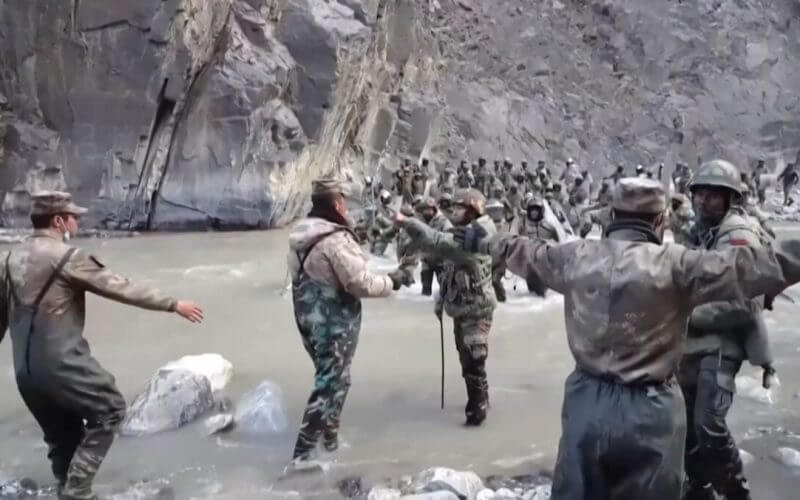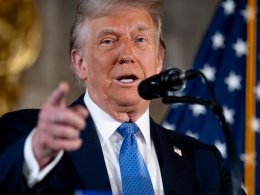A Chinese aircraft flew very close to an Indian military position on the disputed border in eastern Ladakh in the last week of June, according to reports by Indian media outlets.
Experts said India should assert itself to counter Chinese bullying tactics and should consult the Taiwanese who have faced continuous air invasions from the communist regime.
The incident was notable because it happened soon after the second anniversary of the June 15, 2020, bloody Galwan conflict, which resulted in the death of 20 Indian soldiers.
A few days before the anniversary, Wei Fenghe, the Chinese regime’s defense minister, at a major security summit in Singapore, the Shangri-La Dialogue, blamed India for the standoff.
The air violation though “not very serious or alarming” could have led to further escalation considering its timing, sources told the Times of India on July 8. It immediately led the Indian Air Force to activate its air and other defense measures, and New Dehli raised the issue with Beijing authorities, the report said.
India and China have witnessed heavy military build-up on either side of the border after the 2020 Galwan conflict. Meanwhile, 15 rounds of military talks have made little headway.
Namrata Hasija, a research fellow with the New Delhi-based Centre for China Analysis and Strategy, told The Epoch Times that the threat on the border has persisted since Galwan happened.
“We have to understand that the threat was never gone. It’s been two years of talks. 15 rounds of commander-level meetings but nothing has come out of it. There has been no [military] disengagement. In fact, they just announced that there’ll be a 16th round [of talks], but to me, it’s been a stalemate,” said Hasija.
The Ladakh unit of India’s Defense Ministry declined to comment on the report.
The Chinese regime’s military, the People’s Liberation Army (PLA), engaged in this action to exert psychological pressure on India, similar to what it has done to other nations in the wider region, according to experts. Through these tactics, the PLA studies its adversaries’ reactions, they added.
“The Chinese copy here the playbook they use for incursions into the airspace of Taiwan, South Korea, and Japan: the PLA-Air Force probes the reaction time of the respective air forces and coerces them to react by sending air patrols monitoring the intruders, which is exhaustive for crews and material, and also binding military resources of those air forces,” Frank Lehberger, a Europe-based sinologist and expert on greater China, told The Epoch Times in an email.
Taiwan had to deploy its fighter jets on May 30 to warn off 30 Chinese warplanes that intruded into the island’s air defense identification zone (ADIZ), the second-largest incursion this year following 39 PLA jets entering Taiwan’s ADIZ on Jan. 23.
“This might be a gesture in the sense the way they are doing with Taiwan—the same kind of psychological pressure because our troops are right there at the border,” said Hasija.
Chinese Communist Party’s 20th Party Congress, where Chinese leader Xi Jinping is expected to secure an unprecedented third term as Party head, is scheduled for this fall, and Hasija believes that in the next two to three years if domestic pressures increase on Xi, he’ll “definitely do something outside of China to validate himself.”
“There are only three areas where he can do that: South China Sea, Taiwan, and India. When it comes to Taiwan and the South China Sea, they know the U.S. will intervene. For me the Chinese are watching that and they’ll do something over there only when they know the U.S. will not intervene, but they know that in India, the U.S. is not going to intervene,” said Hasija.
Given the Chinese regime’s past aggression against India under Xi, Hasija considered that there was a high possibility of another confrontation between Chinese and Indian troops should the leader secure his third term.
Experts said India is more prepared compared to 2020 when it was taken by surprise in Galwan, and should be more proactive in asserting itself against China’s tactics.
“It is useless for India to bring this up in regular meetings with the Chinese, stress how well-behaved, nice and peaceful or friendly India is … and hope [China] will see the error of their ways and stop their unilateral moves and provocations. The only way for India to make the Chinese stop is to retaliate in kind: probe their reaction time and keep the Chinese PLA-Air Force on edge,” said Lehberger.
If the Chinese engage in a repeat of the Galwan incident on the Indian border, it’s likely to turn “long and bloody,” according to Hasija.
“The Chinese have lost the element of surprise. We are prepared,” she said. “The Chinese want a quick victory which they’ll not get.”
Lehberger said that the Indian defense establishment should consult the Taiwanese, to leverage their experience and defense knowledge against Chinese incursions.
“The Taiwanese have found out what is the Chinese PLA Air Force’s Achilles heel and when they are most vulnerable,” said Lehberger.
Last year, the Chinese reportedly used aging warplanes turned into unmanned aerial vehicles for an “island encirclement exercise” against Taiwan. The South China Morning Post reported that China uses retired war planes as a low-cost, no-causality option to confuse Taiwan’s air defense system, hone its combat skills, and test Taiwan’s responses.










